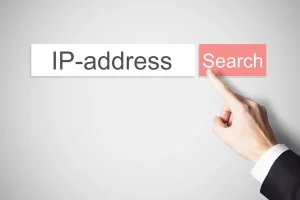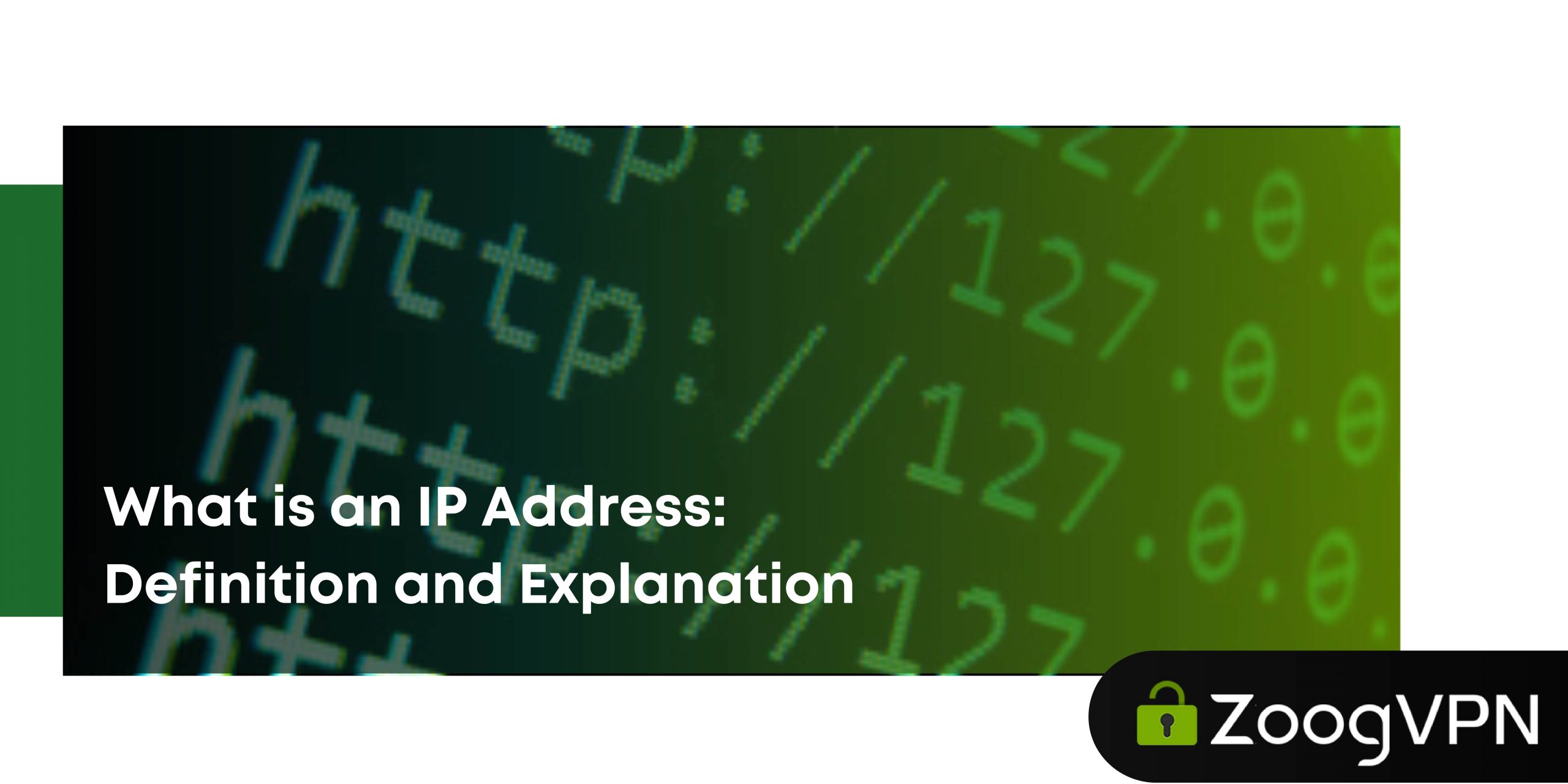An IP address (Internet Protocol address) is a unique numerical label assigned to each device connected to a network that uses the Internet Protocol for communication. It serves two core functions: identifying the device and providing its location within the network.
Surfing the network without understanding IP addresses is like sending a letter without knowing the recipient’s address—it just won’t get there. IP addresses serve as the essential “coordinates” for all your online activities, ensuring that your data reaches its intended destination. Regardless of your activities, like browsing, streaming, or working remotely, the unique numerical labels are integral to keeping you connected.
However, as important as they are, IP addresses can also expose your online behavior and even your location to unwanted access. This guide will delve into what IP addresses are, their operation and concept, and why safeguarding yours is crucial for maintaining your online privacy. Ready to take control of your online safety? Let’s discover the world of IP addresses together.
What is an IP Address?
An IP address, short for “Internet Protocol” address, is a unique numerical label assigned to every device connected to a computer network that uses the Internet Protocol for communication. You can think of it as the online equivalent of a postal address: just as mail needs an address to reach its destination, data sent over the internet requires an IP address to find its target. This makes IP a fundamental part of how the internet operates, enabling devices to communicate with each other effectively.
What is IP address in practice? An IP address consists of a series of four numbers separated by periods (e.g., 192.158.1.38), with each number ranging from 0 to 255. This format, known as IPv4, allows for over 4 billion unique addresses, though newer standards like IPv6 have been developed to accommodate the ever-growing number of internet-connected devices. In IPv6, addresses are longer and written in hexadecimal format, significantly expanding the number of possible addresses.
These addresses are not arbitrary; they are meticulously structured and distributed by the Internet Assigned Numbers Authority (IANA), a part of the Internet Corporation for Assigned Names and Numbers (ICANN). ICANN, a non-profit organization established in 1998, plays a critical role in maintaining the security, stability, and interoperability of the internet. When you register a domain name, for example, a portion of your registration fee goes to ICANN, which oversees the allocation of IP addresses and ensures that each one is unique and properly assigned.
IP addresses are the backbone of online communication and can be described as the routing labels that direct data across the vast and complex landscape of the internet. They basically make the seamless exchange of information online possible.
How do IP addresses work
When you connect a device to the internet, it doesn’t directly connect to the global network. Instead, it first connects to a local network, such as your home Wi-Fi or your company’s network, which is linked to the internet. This local network, typically managed by your Internet Service Provider (ISP), assigns an IP address to your device, allowing it to communicate over the internet.
Your IP address performs like a digital identifier, directing internet traffic to and from your device. However, it is not permanent; you can change your IP address if you reset your modem or router, or if your ISP assigns you a new one. Besides, when you connect to the internet from a different location, like a coffee shop or hotel, you’re assigned a temporary IP address by the local network’s ISP. This seamless process of assigning and using IP addresses happens behind the scenes, ensuring that your devices can connect to and communicate with other devices anywhere in the world.
Types of IP addresses
What is an IP address, and what are its types? They come in various categories, each serving a diverse purpose. Let’s discover the different types of IP addresses and their functions, which are crucial for effective network management and security.
Dynamic IP addresses
Dynamic IP addresses are temporary addresses assigned to devices by a DHCP (Dynamic Host Configuration Protocol) server each time they connect to a network. These addresses change periodically, providing a flexible solution that helps to conserve the limited number of available IP addresses. Since dynamic IP addresses are not permanently assigned to a single device, they offer an added layer of security, making it harder for malicious actors to target a specific device over time. This type of IP address is advantageous for ISPs (Internet Service Providers) and large networks, as it simplifies the management of IP addresses and reduces the risk of IP address conflicts.
Static IP addresses
On the other hand, static IP addresses are permanent addresses assigned to a specific device, remaining constant regardless of the network environment. These addresses are integral for devices that need consistent and uninterrupted access, such as servers, printers, and networked cameras. Static IP addresses are easier to track and manage, which is beneficial for tasks like remote access, hosting websites, or running servers. However, this constancy also means that static IP addresses are more vulnerable to security threats, as their permanence makes them easier targets for cyberattacks. Despite this, they are indispensable in cases requiring stable connections and predictable network behavior.
Shared IP addresses
Shared IP addresses are commonly used in web hosting environments where multiple websites are hosted on a single server. In this setup, all the hosted websites share the same IP address, which is cost-effective and efficient for hosting providers. This approach allows hosting companies to offer affordable services to clients who do not need a dedicated server. However, shared IP addresses can sometimes lead to issues such as IP blacklisting, where the actions of one website can negatively impact the reputation and performance of others on the same server. Regardless of these challenges, shared IP addresses remain a popular choice for small to medium-sized businesses that require a web presence without the need for extensive resources.
Dedicated IP addresses
In contrast, dedicated IP addresses are assigned exclusively to a single domain or a household, providing enhanced security and performance. Dedicated IPs are often used by large businesses, e-commerce platforms, and organizations that require secure and reliable access to their websites or services. With a dedicated IP address, a website offers benefits like improved reliability and faster response times, ensuring secure transactions and boosting customer trust. What’s more, dedicated IP addresses can elevate email deliverability and reduce the risk of being affected by the actions of others on a shared server. Although they are relatively more expensive than shared IP addresses, the benefits of dedicated IPs make them a valuable investment for users and businesses prioritizing security and reliability.
Public IP addresses
Last but not least, public IP addresses are the ones visible on the internet and assigned to devices that connect directly to it. They are globally unique and allow devices to communicate with others outside their local network. In contrast, private IP addresses are used within local networks to identify devices internally and are not accessible from the internet. Since public IP addresses are exposed online, they are more vulnerable to attacks, making strong security measures crucial. NAT (Network Address Translation) is commonly used to enable multiple devices on a private network to share a single public IP, helping to conserve the limited number of public IP addresses available.
How can I find my IP address?
Finding your IP address depends on whether you’re looking for a public or private IP address and the device you’re using. The easiest way is to search “What is my IP” on Google or any search engine, and it will display your public IP at the top of the search results. This IP address is assigned by your Internet Service Provider (ISP) and is visible to external networks.

How easy it is to find out your IP address
Finding out your IP address is incredibly easy and can be done in seconds, even if you’re not tech-savvy. There are multiple ways to discover your IP address, but the simplest is to use an online tool or just ask a search engine like Google, as mentioned in the previous paragraph. No technical knowledge is required — just a few clicks or a single question. You can also open the “What is my IP address” page, and ZoogVPN will tell it for you.
If you’re curious about the IP address assigned to your specific device on a local network, that’s also easy. On Windows, you can find it by typing “cmd” in the search bar, opening the Command Prompt, and entering the command ipconfig. On a Mac, go to System Preferences, click on “Network,” and you’ll see it listed under your active connection. Smartphones make it just as easy – head to the settings app, find the Wi-Fi section, and tap on the connected network.
Beyond just curiosity, knowing your IP address can be useful in various scenarios – troubleshooting network issues, setting up a secure connection, or even accessing remote systems. Despite the simplicity of finding it, your IP address holds a lot of information about your online presence, so it’s wise to be aware of it. Basically, discovering your IP address is as simple as checking the time on your phone.
How to find your IP address on Windows
Your IP address detection varies by platform. Here’s how to do it on Windows:
Open the Command Prompt:
- Click on the Start menu or press the Windows key.
- Type “cmd” (without quotes) in the search bar and press Enter.
Run the IP Configuration Command:
- In the Command Prompt window that appears, type “ipconfig” (no quotes) and press Enter.
Locate your private IP address:
- Look for the section labeled “IPv4 Address” under your active network connection. The number next to it is your private IP address.
How to find your IP address on Mac
Finding your private IP address on a Mac is also pretty straightforward. Follow these steps:
- Open the Apple menu and select System Preferences.
- Click on Network to access your network settings.
- In the Network window, select the active connection (e.g., Wi-Fi or Ethernet) from the list on the left.
- Your private IP address will be displayed in the Status section on the right, beneath the connection details.
- For Wi-Fi, you may need to click the Advanced button and then the TCP/IP tab to see the IP address.
How to find your IP address on Android
Let’s detect your IP address on an Android device:
- Open the Settings app on your Android phone or tablet.
- Tap on “Network & Internet” (this may vary slightly depending on your Android version or device manufacturer).
- Select “Wi-Fi” and ensure you are connected to a network.
- Tap on the network name you are connected to. This will open detailed network information.
- Scroll down to find your IP address listed under the network details.
How to find your IP address on an iPhone
On an iPhone, you can locate your IP address with these steps:
- Open the Settings app on your iPhone.
- Tap on Wi-Fi to view available networks.
- Locate the network you are currently connected to and tap the “i” icon next to it. This icon is typically inside a circle.
- Under the DHCP tab, your private IP address will be displayed alongside other network details.

IP address security issues
Answering “what is an IP address?”, it is not just a random string of numbers; it’s a key that can unhide your current location, online habits, and even personal information if not properly secured.
Location exposion
One of the biggest security risks associated with your IP address is its potential to expose your physical location. Cybercriminals, using simple tools, can track your IP address to determine your geographic location. While it may not pinpoint your exact address, it can narrow down your location to a specific city or neighborhood, putting your privacy at risk. This information can be exploited for targeted attacks, such as phishing schemes, where attackers craft convincing messages based on your location.
Hacker attacks
Moreover, your IP address can be a doorway to more significant breaches. Hackers often use IP addresses to initiate attacks on your network. Once they have your IP, they can probe for open ports, find vulnerabilities, and potentially gain access to your devices. This can lead to data theft, malware installation, or even complete control over your system.
Tracking for targeted advertisements
Your IP address also plays a role in online tracking. Advertisers and data brokers use IP addresses to track your browsing habits across the web. This data is often collected, analyzed, and sold, building a detailed profile of your online activities without your consent. While this may seem like a mere annoyance, it’s a stark reminder of how your IP address can be used to erode your privacy.
Securing your IP address is essential to protecting your online presence. Simple measures like using a Virtual Private Network (VPN) can mask your IP address, making it difficult for hackers and trackers to trace your activity. Regularly updating your router firmware and using strong, unique passwords for your network devices can also add layers of protection. Let’s move on and consider these practices to hide your IP address more precisely.
How can I protect my IP address?
By following these steps, you can easily secure your current unhidden IP. Besides, we highly suggest you to verify if your location was changed by navigating to this link. Here, you can check “What is my IP address” after applying any of these strategies.
Virtual Private Network (VPN)
Hiding your IP address is essential for safeguarding your online privacy, and there are several effective methods to achieve this. One of the most reliable ways is by using a Virtual Private Network (VPN). A VPN masks your original IP address by routing your internet traffic through a VPN server, which assigns you a new IP address and encrypts your data. This makes it extremely difficult for anyone to track your online activities or access your personal information. VPNs are particularly beneficial when using public Wi-Fi, accessing restricted content, or avoiding intrusive adware. However, choosing a reputable VPN service is crucial, as not all offer the same level of security and privacy.
Learn about: all benefits of using a VPN
Proxy server
Another option is to use a proxy server, which acts as an intermediary between your device and the internet. It assigns you a new IP address, enabling you to bypass filters and access blocked websites. However, unlike VPNs, proxies do not encrypt your data, making them less secure. Free proxy servers are often slow, unreliable, and may even compromise your privacy by selling your browsing information. Paid proxies are generally faster and more reliable, but they still don’t offer the comprehensive security that a VPN provides.
Tor Browser
The Tor Browser is another powerful tool for hiding your IP address. Tor uses a network of volunteer-operated servers to route your traffic, encrypting it multiple times in the process. Each server in the network decrypts one layer of encryption before passing it on, ensuring that your original IP address remains hidden. While Tor offers a high level of anonymity, it can slow down your internet connection, making it less suitable for activities that require speed and efficiency. Moreover, some Internet Service Providers (ISPs) can detect Tor usage, which might raise suspicions. Despite these drawbacks, Tor remains a reliable option for those seeking to avoid surveillance and censorship.
FAQ
How do I find my IP address?
You can find your IP address by searching “What is my IP address?” in a search engine, checking your device’s network settings, or using command-line tools like ipconfig (Windows) or ifconfig (macOS/Linux). Your IP address is a unique identifier for your device on the network.
What does an IP address tell you?
An IP address indicates your device’s location on the internet or a local network. It can reveal your general geographic location, ISP, and, in some cases, the type of network you’re using (home, work, etc.).
Can someone detect my IP address?
Yes, someone can detect your IP address, especially when you connect to websites, use online services, or engage in peer-to-peer activities. However, they cannot directly access your personal information without further exploitation.
What is a loopback IP address?
A loopback IP address, most often 127.0.0.1, refers to your own device. It’s used to test network software without sending data over the network. It’s a standard address that always points back to the originating device.
What are the two types of IP addresses?
The two types of IP addresses are IPv4 and IPv6. IPv4 uses a 32-bit address format and is most commonly used. IPv6, a newer standard, uses a 128-bit address format, providing a vastly larger number of possible addresses to serve the growing number of internet-connected devices effectively. The transition to IPv6 became necessary because the available IPv4 addresses, with their 32-bit format, began to run out due to the accelerated expansion of internet-connected devices.



























